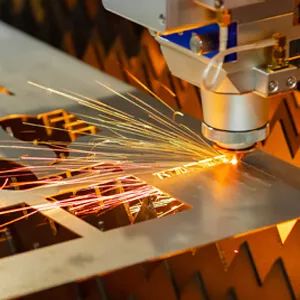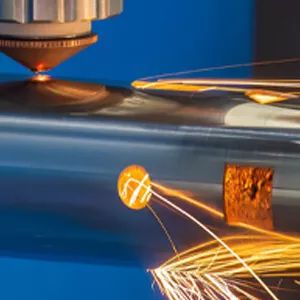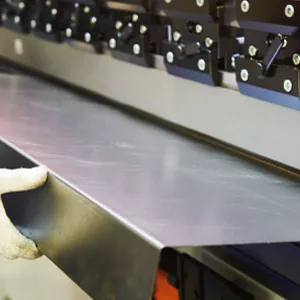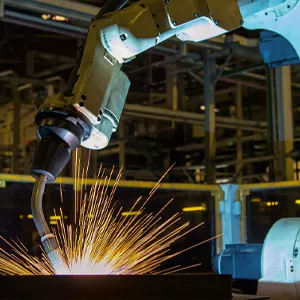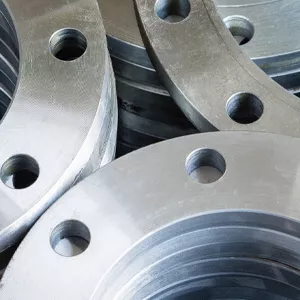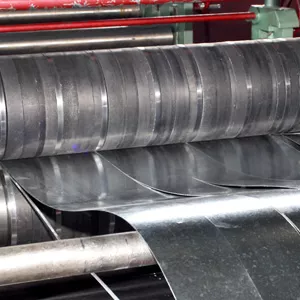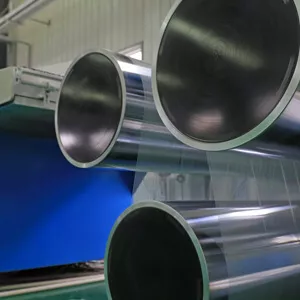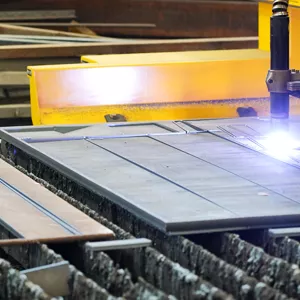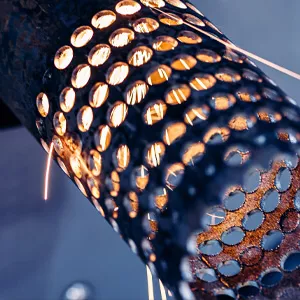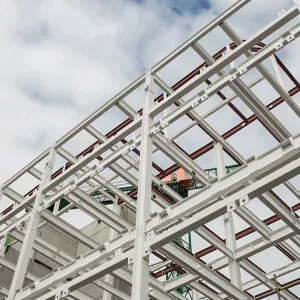
Sheet bending is a process that allows metals such as steel, aluminum, and stainless steel to be shaped into desired forms and diameters. This process is widely used in various areas of the industry and makes significant contributions to the production processes of modern technology. Every stage of sheet bending requires precision and expertise.
What is Sheet Bending?
Sheet bending is the process of transforming metals into forms with specific angles and diameters. This process is typically preferred for applications involving sheet steel, aluminum, and stainless sheet bending. Sheet materials can be shaped into desired lines and angles during the bending process without damaging their structure. This feature makes sheet bending very useful in many sectors such as automotive, construction, energy, and home appliances.
Sheet bending is a process that requires precision in industrial and intricate works. It provides production that is both aesthetically and structurally coherent.
Where is Sheet Bending Used?
Sheet bending has a wide range of applications. It is particularly used in the following sectors:
- Automotive Industry: Sheet bending is used to produce car parts such as doors, fenders, and engine protection panels. Stainless sheet bending increases the durability of the car and provides an aesthetic appearance.
- Construction and Building Materials: Sheet bending is widely used in the structural elements and decorative applications of buildings. For example, it is preferred for exterior cladding and roofing materials.
- Energy Sector: The sheet bending process is used in large structural components such as steel structures in power stations and wind turbines.
- Home Appliances: Sheet bending plays a significant role in the inner and outer coatings of ovens, refrigerators, and other electrical home appliances.
- Defense Industry: Sheet bending technologies are utilized in the production of armored vehicles and defense equipment.
Sheet bending companies have machine parks equipped with advanced technologies to produce solutions for these sectors.
How is the Sheet Bending Process Conducted?
The sheet bending process consists of the following steps:
- Material Selection: The material to be used for sheet bending is determined according to the process and the project. Stainless sheet is often preferred for its durability and long life.
- Draft Preparation: Designs are created and details are determined with the help of CAD software. This stage is vital for the precision of the process.
- Machine Settings: The sheet bending machine is programmed according to the desired angles and diameters. CNC-controlled machines ensure precise outcomes.
- Bending Application: The machine slowly bends the sheet surface and performs the process. Stainless sheet bending requires precision so that the material can be evenly loaded.
- Inspection and Completion: The resulting outcomes are subjected to quality control tests. If there are any errors, corrections are made.
Sheet bending ensures excellent results with the right equipment and professional work practices.
What Machines Are Used for Sheet Bending?
The machines used in the sheet bending process vary according to technological equipment and capacity. The most commonly preferred machines are as follows:
- Hydraulic Bending Machines: These machines have large bending capacities and are ideal for bending thick sheets.
- CNC Controlled Machines: These machines, used in precision applications, can be automatically programmed and provide high efficiency.
- Mechanical Bending Machines: Used for less complex projects and are more cost-effective.
- Sheet Rolling Machines: Used to obtain round or oval forms.
Sheet bending companies perform their work perfectly by selecting the machine appropriate for the project.
What Materials are Used in the Sheet Bending Process?
Various materials are used in the sheet bending process. These materials are determined according to the project and functionality:
- Stainless Sheet: Stands out with its durability and corrosion resistance.
- Aluminum Sheet: Preferred for its lightweight and flexibility.
- Galvanized Sheet: Offers extra durability and stands out with its long life.
- Mild Steel: Offers a low-cost option with a wide range of applications.
The choice of material in the sheet cutting bending process directly affects the quality and durability of the final production.
Challenges Encountered in Sheet Bending Processes
The sheet bending process is an operation that requires experience and precision. However, various challenges can be encountered in this process:
- Material Quality: The quality of the sheet directly affects the bending process. Poor quality or incorrectly chosen materials can lead to breakage or tears during bending.
- Bending Precision: Precision is crucial in stainless sheet bending processes. Incorrect calculations or faulty machines can result in unwanted deformations.
- Machine Settings: Incorrect settings of sheet bending machines can lead to deterioration in product quality.
- Operator Errors: Inadequate experience and knowledge can result in irreversible mistakes during the bending process.
- Work Safety: If care is not taken during the sheet cutting bending process, accidents may occur.
Sheet Bending Techniques
Main techniques used for the sheet bending process are:
- Bending with Hydraulic Press: In this technique, sheet is bent using hydraulic pressure. It is preferred for high-precision jobs.
- Air Bending: Bending is achieved by supporting a certain section of the sheet with air. Suitable for precise and complex parts.
- Bending Using Dies: Standard shapes can be bent with the help of dies. Common in mass production.
- CNC Bending: Very precise bending operations can be performed with computer-assisted machines. It is an example of advanced technology.
- Roll Bending: Sheet rolling processes are usually done with this method. It allows cylindrical shapes to be obtained.
In Which Sectors is Sheet Bending Process Widely Used?
Sheet bending is widely used in various sectors. Some of them include:
- Automotive Sector: Sheet bending techniques are utilized for car bodies, chassis, and other structural parts.
- Construction: Sheet rolling techniques play a crucial role in building and infrastructure projects.
- Furniture: Modern and aesthetic furniture is produced using stainless sheet bending.
- Home Appliances: Metal parts of household items such as washing machines and refrigerators are generally produced by the sheet cutting bending process.
- Aerospace: Sheet bending techniques are indispensable in this sector where precision is highly important.
Points to Consider in Sheet Bending Processes
Main points that should be considered to successfully complete the sheet bending process:
- Correct Material Selection: It is essential that sheet bending companies determine the appropriate type and thickness of the material.
- Precise Calculations: Bending angles and force calculations must be done carefully.
- Machine Calibration: Using sheet bending machines with correct settings is necessary for error-free production.
- Operator Training: Experienced and trained personnel ensure that the process is managed in the most efficient way.
- Quality Control: It must be verified that every produced piece complies with quality standards.
What Advantages Do Products Manufactured with Sheet Bending Have?
Products manufactured with sheet bending techniques have many advantages:
- Precision and Quality: Stainless sheet bending techniques guarantee quality in products requiring high precision.
- Durability: Sheet rolling and bending products are durable and long-lasting structures.
- Flexibility: Products of different shapes and sizes can be achieved.
- Economical: Sheet bending processes reduce production costs.
- Aesthetics: Sheet bending products used in furniture and decoration have an aesthetic appearance.
Sheet bending stands out as an indispensable process in both industrial and individual projects. From stainless sheet bending to sheet rolling techniques, every step requires precision and professionalism. Thanks to the quality services offered by sheet bending companies, various advantages can be obtained. Applying the correct techniques and taking necessary precautions ensure the success of both the process and the final products.



